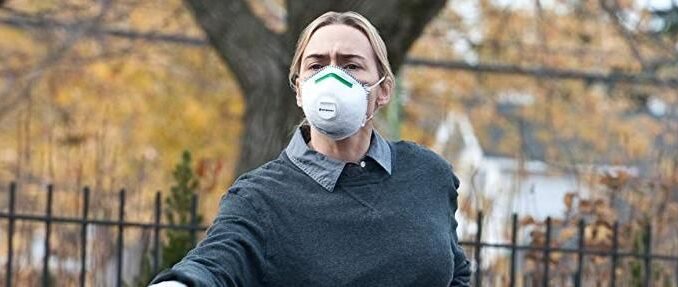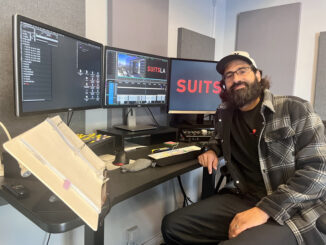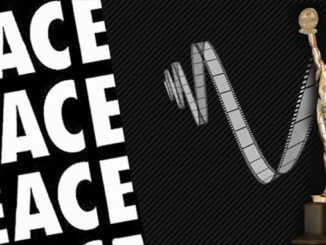
By Peter Tonguette
In March, as the coronavirus pandemic was starting to change life in America, picture editor Stephen Mirrione, ACE, realized he had seen this movie before. In fact, he had edited it.
About a decade earlier, Mirrione had served as the editor of Steven Soderbergh’s thriller “Contagion.” Released by Warner Bros. Pictures in 2011, the film charts the evolution of the fictional MEV-1 virus, which, after first turning up in Hong Kong, proves unstoppable in its march across the globe.
At the center of the screenplay by Scott Z. Burns are a trio of scientists — World Health Organization epidemiologist Dr. Leonora Orantes (Marion Cotillard) and two Centers for Disease Control and Prevention officials, Dr. Erin Mears (Kate Winslet) and Dr. Ellis Cheever (Laurence Fishburne) — who are tasked with making sense of a shockingly lethal and easily spread virus. The film also stars Matt Damon as Mitch Emhoff, whose wife, Beth (Gwyneth Paltrow), loses her life to the illness in the opening scenes.
With its science-based storytelling, “Contagion” was considered a success upon its initial release nine years ago, earning enthusiastic reviews and over $135 million at the domestic box office. As the concerns over coronavirus have mounted, however, the film has been given a new look by viewers, who have turned it into a hit once again via cable and streaming platforms. Earlier this month, it was No. 1 on FandangoNow’s list of top library titles on streaming platforms.

Mirrione, a frequent Soderbergh collaborator who won an Oscar for editing “Traffic” (2000), found his own life was touched by the real-life shutdowns that began to be enacted last month. While cutting a film for director George Clooney, Mirrione received word that the studio, Netflix, would allow individual productions to authorize their crews to work from home — a harbinger of the stay-at-home orders to come.
“We all made the decision that we were going to transition to working from home, which we were able to do really easily based on the systems that we have set up,” Mirrione told CineMontage in a recent phone interview. The reality, though, only started to hit the editor when he stopped at a grocery store for the first time in about a week, encountering nearly bare aisles. “That’s when it really struck me: ‘Oh, this is the movie. This is the kind of thing that happens when something is so far-reaching that people start to panic,’” Mirrione said.
One reason for the current revival of interest in “Contagion” is its realism in presenting the plausible course of a deadly pandemic. In making the movie, Soderbergh and Burns sought to “follow the science” and avoid the clichés commonly encountered in disaster movies, Mirrione said. “They wanted to avoid Hollywood pretense,” the editor said. “If you present it as it is, it’s fascinating and frightening — it’s all the things you would want.”
In fact, Mirrione found that an early cut of the film got bogged down in sometimes-clinical detail that sapped some of the forward momentum of the plot. “Every scene was over-explaining everything because there was so much detail,” Mirrione said. “They captured so much great detail, but in order to digest that as you’re watching it became almost impossible.” Soderbergh then suggested that Mirrione prepare a lean-and-mean 90-minute cut. “We just went through it in the most ruthless way possible, trying to rip out anything that we could,” said Mirrione, who found that the less information audiences were given, the scarier the events shown in the film became.
“It made the movie so much scarier because suddenly, as you’re watching, things are happening and you don’t have time to quite understand what’s happening,” Mirrione said. “Your brain is trying to keep up and fill in the blanks, and you realize this thing is going faster than you can keep control of in your head.”
Of course, Mirrione and Soderbergh ultimately built the film back up — the final cut runs 106 minutes — but some choices made in the cut-down version were retained. For example, the opening five-minute sequence of the film — in which the virus is shown impacting one infected individual after another — originally ran closer to 30 minutes. “I just dug in and treated it like we were putting together a trailer, almost, where you didn’t need to absolutely understand who’s here, who’s here, who’s here,” Mirrione said, adding that Dr. Orantes — Cotillard’s character — would later piece together the progression of the virus, eliminating the need for such an extended introduction.
Soderbergh — who served as his own cinematographer, crediting himself, as usual, with the first and middle names of his father, “Peter Andrews” — captured numerous shots of human hands coming into contact with assorted surfaces, which were assembled into a montage that, viewed from the perspective of today’s pandemic and fears of rapidly spreading pathogens, is terrifying. “This invisible force is essentially the villain of the movie,” Mirrione said. “You had to demonstrate that this is the thing that’s moving from place to place to place.”
The decision to cut entire scenes — rather than simply shape and trim those scenes — was partly a consequence of Soderbergh’s efficient shooting methods. “In order to shoot in as many locations and with as many actors and get as much on-camera as he was able to, he was shooting only a few setups — maybe one or two setups and two or three takes at most,” Mirrione said. “Of course, that then constrains you in the editing. . . . Instead of having that flexibility within the scenes,” he said, “it became about using the scenes themselves and breaking those into smaller bits.”
Amid the editorial shuffle, Mirrione worried that the heart of the movie was being lost. Indeed, an early screening confirmed that the emotions had been dulled. “When you’re going about it with an attitude of ‘I don’t want this to feel like a movie,’ what ends up happening is that any time when a scene might have felt like it was going to go too far that way, he would tamp it down or rewrite it or remove it,” Mirrione said.
In response to the screening, the team decided to film a new scene during which CDC researcher Dr. Ally Hextall (Jennifer Ehle) is seen testing the efficacy of a possible vaccine for MEV-1 by spending time with her ill father; in the script, the moment had taken place off-screen.
“It just changed everything around it because you suddenly had a very human connection,” said Mirrione, who also lobbied to add an extra layer of emotion in the next-to-last scene in the film, when—in a post-pandemic world — Mitch’s daughter, Jory (Anna Jacoby-Heron), is seen enjoying a stay-at-home prom. “It’s the first time in the movie where Matt Damon’s character is actually allowing himself to become overwhelmed with the grief and the emotion of everything that’s happened,” said Mirrione, who, in looking up popular prom songs, found U2’s “All I Want Is You.”
“When I put that one in, there was something about the lyric, and something about what the song was saying, that applied so much to what was happening in the movie,” he said. “It’s the kind of song that is a bit on the nose and is very emotional, but I also felt it was true to what a moment like that could be.”
So why are we compelled to watch “Contagion” right now? Mirrione speculates that viewers take comfort in watching a movie about a pandemic that reaches something like a hopeful conclusion. “You watch a movie like this and you start to feel: ‘Oh, well, I’ve already now gone through the whole thing. I know how it’s going to end. I know there’s going to be a lot of pain, but eventually we’ll all figure it out and everything will be fine,’” Mirrione said.
If only life was as simple as the movies.
Mirrione concluded, referring to the real-life coronavirus crisis: “We’re just in the middle of it right now and hoping for the reshoot of the scene where somebody does something so heroic and so brave that ends up creating a vaccine that saves us all.”






